There are a lot of things that are important to us in this world, but nothing is more important than ensuring you and your family are prepared for a disaster or emergency.
A saying I have thrived on ever since I started prepping is ‘prior preparation prevents poor performance‘. And when it comes to knowing how to prepare for a disaster or emergency and ensuring the safety of yourself and your family and friends, it’s not just a poor performance, it is the health and safety of the ones you care about – and that is second-to-none.
While it is always nice to get stuck into the finer details of preparedness, in this post, we take a look at the more basic side of preparedness with a trip back to “prepping 101“, and how you can prepare for yourself and your family to survive emergencies and disasters.
The most important thing to know when it comes to getting the family prepared is that prepping is not as difficult as some people make out it is, and it doesn’t need to be so expensive either. Prepping is fun, easy, and cheap, and, something you can do without having to invest too much time or money, all for something priceless, which is the safety of your loved ones.
When I first started prepping, I didn’t have guides or how-to’s to follow, I had past examples from homesteaders and the tv show Doomsday Preppers at my disposal. Since my explorations through prepping, I hope to motivate others to start prepping as well. I have written this “prepping 101” prepper’s guide on how I prepared for disasters and emergencies in my area and how you can too. You can click each link which will take you to the corresponding section. If you’re anything like the rest of us and need to save things, you might want to bookmark this post revisit this guide whenever you need to strengthen your preparedness.
Why is disaster preparedness so important?
Preparedness is knowing that emergency services will not be able to assist you and that in the first few hours or even days of a disaster, you are the only person that can help you and your family or friends. In this circumstance, it is not about being a hero, it is simply about safety and survival.
In a recent study published in The Prepping Guide, it was revealed that only 2.7% of Americans considered themselves preppers. Now sure, preppers can get a pretty bad name as far as the popular media would make of it, but even if we included the ‘closet’ preppers in that sense, the statistic is far too low.
In Australia, the UK, Germany, and Japan, the statistics for preparedness individuals are even lower. Yet as half of the wforld has been faced with extreme weather conditions over the past two years alone, preparedness is still quite a low trend amongst people.
This low statistic is due to the large volumes of people that believe emergency services will provide them with backup food and assistance in a disaster, but that is not the case.
The harsh reality is that in severe disasters, individuals might find themselves in a temporary state similar to homelessness, without access to basic necessities or a stable shelter. Many government emergency agencies are pushing the agenda that disaster preparedness is as much a self-responsible issue as it is a government issue, emphasizing the critical need for individual and community readiness in times of crisis.
If you think preparedness is not important, take one look at your local government’s disaster preparedness website. The following sites all provide that you need to prepare your emergency response:
- Ready.gov and the National Safety Council for the United States
- The Red Cross for Australia
- Ready-UK for the UK
- German Government
- Malaysian | 404 Government
- Reliefweb – worldwide
All of these point to one key in disaster preparedness, which is that you cannot rely on government services to help you and that you must take matters into your own hands.
Prepping 101: Prepare For A Disaster Or Emergency
Step 1: What emergencies and disasters happen in your area? | 404
Step 2: Speak to the people you live with about a plan | 404
- Public Alert Systems | 404
- Where is your nearest suitable shelter? | 404
- Planning an evacuation | 404
- During an evacuation | 404
Step 3: Stock up on the goods to survive | 404
- Food and Water | 404
- Build your emergency kit | 404
- Build a kit for your four-legged friend | 404
Step 4: Get your family and friends team sorted | 404
- Contact cards | 404
Step 5: Adjust your gear and learn survival skills | 404
If you are new to prepping, or a little lost on how to prepare for a disaster or emergency and get your family prepared then read on and follow these simple steps to get yourself ready for a possible disaster or emergency in your area.
1. What is a potential disaster or emergency in your area?
To find out about what might occur in your area, take a look into regional natural disasters and think about any unforeseen emergencies that could crop up. Natural disasters happen everywhere. It could be a severe snowstorm, it could be a hurricane, it could be a tornado, it could even be severe heat or drought.
Do a quick search online to determine what natural disasters happen in your area. Sometimes certain natural disasters will happen every single year. There’s ‘hurricane season’ and ‘tornado season’ and ‘drought season’. There are certain seasons in which some sort of natural disaster will occur every single year. Chances are if you’ve lived in a particular place for a few years, you’ve noticed a trend. Don’t ignore that trend. Figure out when those natural disaster seasons are and decide to be proactive by getting prepared. In my area, there are several risks from flooding, snowstorms, severe weather, terrorism, and earthquakes, and these are just a few events that have happened in or around the area I live.
There are also emergencies that we can’t exactly foresee. Such as losing your job, getting a flat tire, blackouts, etc. However, we can still plan for these unforeseen emergencies. I’ll explain how in just a bit. For now, write down a list of all the natural disasters in your area. Then write down a list of some emergencies that might come up. Even if you think that the emergencies ‘could never happen to you’, write it down anyway.
The whole point of being prepared is so we’re able to handle anything that comes our way, even the unforeseen. So really take some time to write out a list of emergencies and disasters.
What are the events that other survivalists prepare for?
You can’t trust that when an emergency appears you and your family will face it with steady minds and without panic. Panic, stress, and fear are all-natural indicators seen in every disaster and emergency. When I say an emergency or disaster, I mean those terms loosely because they do encapsulate a whole lot of different scenarios that could and have happened. We are faced with an endless list of disasters and emergencies and it is no easy task trying to make an emergency plan for them all.
If you are thinking to yourself: ‘what could happen?’, well here’s a few that are at the forefront of the minds of a lot of concerned preppers. Oh, and no, you’re not going to see a zombie outbreak on this list, we will stick to the most likely SHTF events such as Bioterrorism, Drought | 404, Earthquake, Financial Collapse, Floods, Hurricanes, Nuclear attack or other NBC event, War, Global Pandemic (sickness, plague, disease), Tsunami, Wildfires, and snowstorms.
And that’s only a brief mention of some of the main SHTF scenarios you might have heard of, if you’ve seen anything of the prepping community so far, there’s much more. But this is a basic list of ones you are probably well aware of. And to be honest, none of these seem unreasonable. If we look back in history every single one of those events has occurred before.
It would make sense to have a plan on the off-chance one of those events happened again, whether it be across the world or just in your geographic area, right? And making that plan is the first step to preparing your safety. A survey shows that nearly 65-percent of Americans have inadequate plans and supplies for a disaster, this is why you are seeing so much in the prepping seen more recently because you need to make your preparations if you are going to adequately prepare for a disaster. Ensuring you have a suitable bug out plan allows you to be able to get your things ready quickly and in a rush, have communications methods set up to contact those you love and a method of getting out of an affected disaster area.
So how do you get started with the preparations for a family survival plan? The next part is easy and one of the most important. It’s talking with your friends and family who are essentially your survival team and exploring your preparedness options.
2. Speak to your family about a plan
Everyone has someone, and to be honest if you’re going to make a good survival plan, everyone needs someone. Whether it be your family, your partner, your housemate, child, or even your dog, talk to them about your plans. Okay, so maybe the chat with your dog is going to be a bit difficult, but you get what I mean.
If you have family that might be against your prepping plans and you need to convince your loved ones about prepping | 404, take the time to prepare a presentation and be patient as you speak to them about their thoughts on prepping and family survival. While many spouses may scoff at the idea of being prepared, it’s no different than preparing snacks for a road trip or taking extra clothes when you travel. You prepare in almost every aspect of your life, you just may not exactly call it ‘prepping’. Explain to your family what you’ve researched and have a serious discussion about it. Even if everyone isn’t 100% on board with your decision to prepare for a disaster, at least they’ll be informed that you plan to buy supplies and acquire the proper knowledge and skills to get them through any emergency or disaster.
What do you need to discuss with your family?
There are some things you need to think about with your team. There is a common understanding for many survivalists and preppers of a four-step approach that any household should think about when making an emergency backup plan, they are:
Public Alerts and Emergency Warning Systems – Familiarise yourself with your area’s public alert and warning system, or Wireless Emergency Alerts (WEAs). These are alerts sent by state and local safety departments, most countries would have these and are readily accessible. Here are a few:
Where is your nearest suitable shelter? – Find out about your nearest suitable shelter. Remember that the type of shelter depends on the circumstance you are preparing for, so you should get to know a few of them. During a tornado, or extreme weather your stay in a shelter could be quite a brief period before you and your dog, or family is home safe. Depending on where you are, the availability of storm shelters might be scarce or might be in your neighbor’s backyard. But when it comes to something like a nuclear attack, you are going to be waiting a lot longer and in a different type of shelter such as a bomb shelter. So make a list of those nearby ones and their variations.
Sometimes these shelters might not have enough supplies for yourself and your company, and this is by no means at fault of the emergency service provider. These things happen and that’s life. But you can be ahead of the pack already and plan an emergency bug out bag with emergency food to take with you. The contents of this would be food, water, medicine and a maybe even a deck of cards in a bag to take with you when you go to a shelter, or just out of town in advanced warning of a storm or wild weather warning.
There are certain disasters where it may be safer to stay put in your own home, or wherever you are. You might be trapped in a flood, or it might be too late to leave your home and the travel might be unsafe, no problem, these are the things we need to take into consideration when making an emergency plan. In Step 3 we talk about what things you might need to survive at home when this sort of emergency happens.
An emergency could mean you need to take extra care in your home. One emergency could be a flood where it might be suitable to lay out some sandbags and flood-proofing devices in any entrances into your house and block doorways up to stop water from coming in. Another event could be where an attack has caused a spread of hazardous substances in the air. In this circumstance, you are going to have to take some different precautions. There are different shelters where residing from nuclear fallout is safe. In an emergency where a nuclear, biological, or chemical attack has been made you are going to have to seal the room to ensure your survival and that of anyone with you.
Planning an evacuation – When you’re strategizing for survival with your family or friends, or dog, think about what your best evacuation plan might be – this might also be known as your bug out plan, or ‘get outta dodge’ plan. Your evacuation plan may differ depending on what the circumstance may be. Just like in the last scenario, if the air is contaminated you’re going to want to seal yourself off from contamination. Most warning systems are very advanced | 404 and will give you some time to make preparations in your home, or get to safety, so your plan should consist of things you will do for and during an evacuation. For instance, you should be:
- Looking for several places you can go to in an emergency. This could be at a friend’s place in another area or a hotel
- If you have a pet, make sure it’s a place where they are as welcome as you are. Some shelters do not allow pets
- Plan a travel route to your evacuation place for travel by car or on foot, if possible
- If your family is a part during the evacuation, make sure everyone knows where to go to meet up with you
- Keep a full tank of fuel before a disaster might happen, for instance, if there is an indication of a serious weather report, stock up on some emergency fuel so that you don’t have to stop by a fuel pump during an evacuation
- Keep your emergency food, water, and medical kit in the car
During an evacuation – When it is time to evacuate, there is always a lot of stress and panic and that is completely human. But if you are prepared then you are a step ahead of a lot of others and you will feel much happier that you have some things already in place. In an evacuation make sure you secure your home and unplug electrical devices. You should leave a note for anyone coming back to the house looking for you in case they cannot get in touch with you and try to get in touch with them to let them know where you are seeking shelter. A good idea might also be to see if your neighbor needs a lift with you to the nearest shelter.
When you are driving through a storm or flood, keep the radio on and listen for any flooding reports as roads along your route may be closed or blocked.
3. Stock up on the goods to survive
Talk to your team about what everyone needs to survive. Your children might need specific medication, or your pet might need medication too. Make sure you stock up on a small supply of all of those essentials (only if it stays within its expiration date). On the outset, the easiest way to start prepping is to focus on preparing your home by storing food and water. Storing food and water is one of the best ways to get started on your preparedness journey because we all need to eat food and drink water to survive and thrive.
I have published a guide to get started as a prepper for as cheap as possible. It’s easy to follow and runs through the following five preparedness necessities, which are:
- Build a food supply
- Store water (safely)
- Make sure you can cook the food you’ve stored
- Implement an off-grid waste system (rubbish and toilet waste)
- Pack a bug out bag with a bug out plan
Food and water – Start by writing down a list of all the foods you and your family enjoy eating. When it comes to food and water storage, you don’t need to store food that lasts 30 years if you don’t want to. You want to store food that you and your family will eat, even in a crisis. It may be a crisis, but because you’re planning now, you can plan to have the foods that you enjoy eating, without having to sacrifice too much.
You will need to focus on nonperishable foods that last a long time. The types of foods you store will greatly depend on the ages in the household, if anyone has any food allergies if anyone needs to be on any specific diet for whatever reason, etc. Think of everyone’s specific needs and make sure they’re accommodated. Again, because you’re preparing now, you can make sure that you have the proper foods to eat during any situation. When you are storing your foods, make sure you pay attention to the rules of storing foods for maximum shelf life.
If you have a baby or toddler, you’ll need to make sure you store the appropriate foods for them such as formula, baby food, etc. These can become quite rare in a disaster or emergency. If you have pets, make sure to keep at least an extra bag of food around for emergency purposes. Rotate out the food with a fresh bag every 6 months or so.
Don’t forget about ingredients to make foods such as flour, sugar, yeast, salt, pepper, olive oil (or any type of oil) baking powder, baking soda, other spices, etc. For instance, we store the ingredients to make tortillas, as they are easy to make in any situation. If you’d like to store foods that last longer than a few months to a year, you can consider storing freeze-dried meals | 404 such as Mountain House or Wise Foods. You may also want to consider getting some MRE’s if you so choose. You could also consider dehydrating and canning | 404 your foods if you can grow your foods and would rather make long-lasting meals.
The easiest way to start filling your pantry is by grabbing extra food and water during your normal grocery store visits. Grab a few extra cans of tuna and vegetables, a couple of gallons of water, and place it inside of a bin or a pantry that is designated for food and water storage. You don’t have to get it all at once, get it slowly each time you go to the store. Soon you’ll have quite the supply of food and water!
I’ve done a $5 prepping challenge where everything has been under $5 that I have purchased for food, water, and emergency supplies. It was pretty easy, to be honest, so there’s no need to go over any budget and spend a lot of money on prepping at all. One great tip I have is to keep an eye out on those junk mail catalogs that clog up the mailbox. Keep them and go through them for sales on items you might be able to prep with, whether it is bulk discounts on tinned food, pasta, rice, water, or other essentials such as toilet paper, jars, or gardening equipment. I have made considerable savings just by waiting until these local newsletters come out with bumper stocks of coffee or toilet paper to stockpile. At the very least, I’ll have enough for friends and neighbors should they ever need a supply to trade for something in return.
Just a quick note about water, make sure that you’re accounting for all the uses of water. Water isn’t just for drinking, it’s for cooking, hygiene, and cleaning as well. Water usage can add up fast so make sure you have more water than you need. I’d suggest storing at least 2 gallons of water, per person, per day. Don’t forget about your pets.
Build your bug out bag and blackout kit
Now that you’re gathering your food and water for emergencies, you can look at other aspects of preparedness. You may want to consider making a blackout kit and a bug out bag for each family member. A bug out bag is a must-have for any good survivalist. It is a reliable and grabbable emergency kit. For these disasters, and in most real situations, this will include most of the emergency essentials you are going to need.
So how do you make each one of those?
Blackout kit – A blackout kit, is very straightforward. To be honest, you will probably find most people who don’t even identify as preppers will have something like this in the kitchen or the linen cupboard as a quick kit for when the power goes out. Many people will have different thoughts on how to build a blackout kit, some people think that you need to put blankets or food or water in the kit, but all that stuff is already in your home; it doesn’t have to go inside the kit.
The kit would just be to contain items that are easily accessible all in one place during a blackout. So what do you need to keep handy for when the power goes out? You should keep things such as flashlights/lanterns, candles, matches, lighters, batteries, NOAA Weather Radio, or other communication devices/radio, possibly a cooking kit and alternative battery devices to charge your cell phone(s).
That’s about it. Now everything is contained in this one kit and you don’t have to go searching throughout the house to find things during a blackout. Make sure to keep the blackout kit somewhere that is easily accessible, clearly marked and the whole family knows where and when to use it. Blackouts can happen at any time for any reason, so make sure you have this kit handy.
Bug out bag – In a disaster or emergency, our first plan of action should always be to stay put in our homes, there might be times when we’d have to evacuate our homes. In this case, to leave as quickly as possible, all we’d need to do is grab a bug out bag. A bug out bag, or emergency kit, or go bag or whatever you want to call it, is filled with items to get you through 72 hours.
So what would you keep in a bug out bag? I have written up an effective bug out bag list over on our bugging out the guide if you are interested in the finer details of a comprehensive bug out bag list, however, there are some essentials you might want to consider. For instance, your bug out bag should have: emergency food for 72-hours, an extra change of clothes (if you have a baby or a young child, you may need several changes of clothes), if you have a baby still in diapers, make sure to pack diapers, water purification method such as a Sawyer filter, cook set, such as a pot, bowls, and utensils (if you’re carrying food that needs cooking), shelter (could be a tent or just a tarp), paracord, at least 100 feet if not more, a knife | 404, flashlight, with extra batteries, lighter, water bottle, water, if it can last 72 hours, that’s great, but a couple of water bottles is okay, too as you may be able to find water along your path of evacuation, a morale booster (such as a journal, book, deck of cards, toys, etc), sleeping bag or emergency blankets or blankets, first aid kit, a map of your local area, compass.
Those are the very basic supplies. If you see anything else that you’d like to add to your bag, then do so. This is your bug out bag and should be made to fit the individual. Be sure to update your clothes dependent on the current weather. If it’s winter, you’ll want to add winter clothes to your bug out bag. If it’s summer, you’ll have summer clothes instead of winter clothes. And so on. You’ll want to inventory your bug out bag every 3-6 months or so and make sure the clothes and food are all updated.
I’d highly suggest making your bug out bags, instead of buying pre-made ones. This way you know exactly what’s in your bag because you handpicked every single item. You need to also test each item and make sure you’re comfortable using those items before putting them in the bag. You don’t want to have to scramble to figure out how to use something in an emergency when you should be focusing on getting your family to safety. Each family member should have their bug out bag. If you can get them involved in the creation of it, even better. Because then they’ll be able to have things that they enjoy, such as a water bottle that they like, their favorite foods, maybe a few toys that they enjoy and so on.
The bug out bag(s) should be placed somewhere where they are easily accessible in case you need to grab them and run out.
Survival kit for pets – If you have pets, you’ll need to carry 3 days (72-hours) worth of food for them, as well as 3 days worth of water. If you have a large dog you might want to consider something like a dog carry pack to let your dog carry some of its equipment. This helps to lighten the load for yourself, especially if it’s just you and your dog.
Some things you might want to keep in a bug out bag for your pets are: food (3 days), water (3 days), any medicine your pet takes, pet first aid kit – flea and tick prevention, gloves, cotton buds, antibiotic ointment, collar with ID tag, leash and harness if needed, registration papers, a picture of your pet for identification (if you lose them), and during an evacuation it would be good to grab a familiar item of theirs like a blanket or favorite toy
4. Get your family and friends team sorted
This is one that I don’t see enough of when it comes to prepping sites and survival sites, it seems as if no-one has family members. I do have family, and no matter where I am in the world, I couldn’t stand without knowing if they were safe during a disaster or emergency event. I am going to assume you care as just as much about yours, so this is something you can write up with whoever is in your team.
- Write down a list on paper of the contact information of your family, friends, doctors and nearby school and emergency service providers
- Give a copy of this list to everyone you would want to stay in touch within a disaster and make sure they keep it in their wallet or purse and keep a few in the house and the car as well
- Make sure your kids are aware of where to go if there is a disaster. It is important to know that your children know what to do in an event like this and this contact card is also something a teacher could use to call you if they need picking up immediately.
- When you are contacting an emergency or disaster, an SMS is more likely to get through than a call so keep that in mind.
Contact cards – Use laminated contact cards with the phone numbers of your family and a few close friends on it, on the other side keep a picture of your immediate family on it. In the case of a disaster where you might get separated and are at a community shelter, having a photo of your child or partner is a great way to show someone and find them easily. It works a lot better than just a description of what someone looks like.
If you want a pre-made contact card form, the American Red Cross has a great emergency contact card that you can download for you and your family to use.
5. Adjust your gear and learn survival skills
It never hurts to give a plan a run through a few times just to see if you have everything organized. Even if it is just at the table over dinner or on a weekend outing, everyone should communicate their knowledge on what to do when a flood occurs, a wildfire | 404 a nuclear attack, or when you are attacked on the street. If you have children, they can also educate you a bit, as most schools undergo some emergency training regularly. Most of these are fire drills, however in some areas, there are active shooter | 404 drills, and what to do in an earthquake or other disasters.
I know a few families who run through a game once a month of what to do in the event of a disaster. It works and it isn’t a bad idea to go through at all, especially if it could keep a family together and safe one day.
Prepping is also about learning as many skills as possible to increase your chances of survival, make you more self-sufficient and enable you to help yourself, your family, and anyone else in any given situation. Skills will help to keep you alive during an emergency or disaster. There are a lot of skills out there that you can learn for free, right now, that might help you in an emergency or disaster, such as:
- Knowing how to remain calm in stressful situations
- How to find water in a variety of ways | 404
- How to make fire without a lighter or match
- Wilderness survival skills
- Important emergency first-aid skills | 404
And so on. Google will be able to tell you so many other prepper related skills that you can learn. Learn and practice skills as often as you can. Even if you live in an apartment, you can practice fire-making skills in a BBQ pit. Go to your local park and practice shelter making skills. Go to your local library and find books on preparedness.
No matter your current skill level, budget, or time, make sure to squeeze in at least 30 minutes a week to learn a new skill or practice an existing skill. The more skills we have at our disposal, the more capable we’ll be during an emergency or disaster. There is a lot more to do to get prepared, we’ve only scratched the surface here, but these are the top things that you can do to get prepared in a fairly short amount of time. Once the above is completed, you’ll feel more confident and you’ll be able to focus on other aspects of preparedness.
Disaster preparedness learning
More and more as I research and speak to professionals in the world of preparedness, I see trends from emergency response services and government agencies pushing citizens to make their safety arrangements.
This is a similar issue to healthy foods and healthy eating, while the government tries to address the problem through campaigns and strategies, in the end, we are responsible for our own choices. As preparedness becomes a more popular issue in society, start considering your approach to preparedness and what you would do if something were to happen in your area.
Preparedness isn’t about EMP attacks, or war and riots, it’s just answering two simple questions:
- What would you do if…?
- Can you do it now?
If not, then start working towards that.
Remember, you don’t have to do all of this right now. Take it slow, based on your available time and money, and just do your best. The most important thing is to be proactive and take steps to get prepared now to keep your family safe during an emergency or disaster.
All of this information is made for that sole purpose, to have a backup plan to ensure you and your family get through a natural disaster or any other emergency-related event easier through adequate prior preparation. Don’t get me wrong though, even if you are prepared, it’s not easy and if an event does happen it will be stressful. Just ask some of the people who have already been preppers and have had to use their backup plans in floods, wildfires, and mass evacuations. All I can say is these types of disasters do happen, so you need to prepare for it. That is without a doubt.
If you know anyone with a family, or on their own for that matter, who lives in an area that may be susceptible to a disaster or emergency event, share this prepping 101 prepper’s guide with them so that they can see how simple it is to make preparations for something so important: life and safety.


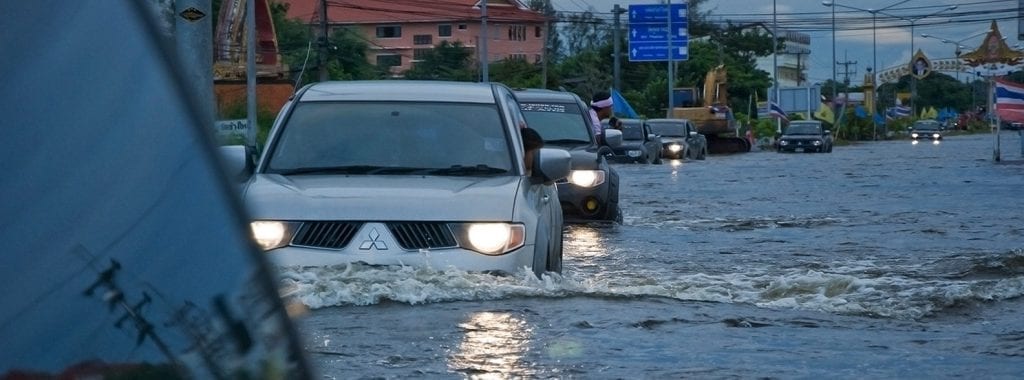
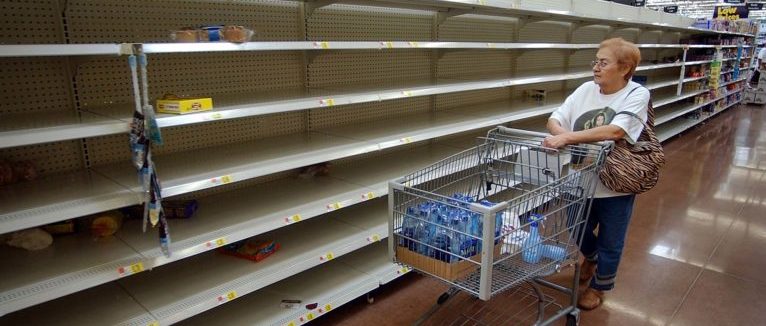



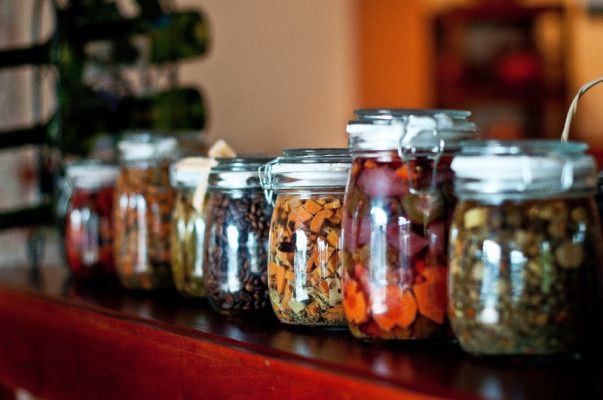



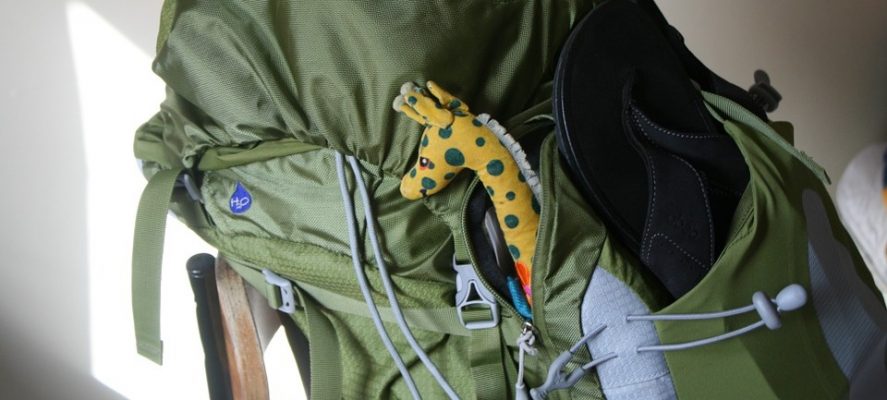

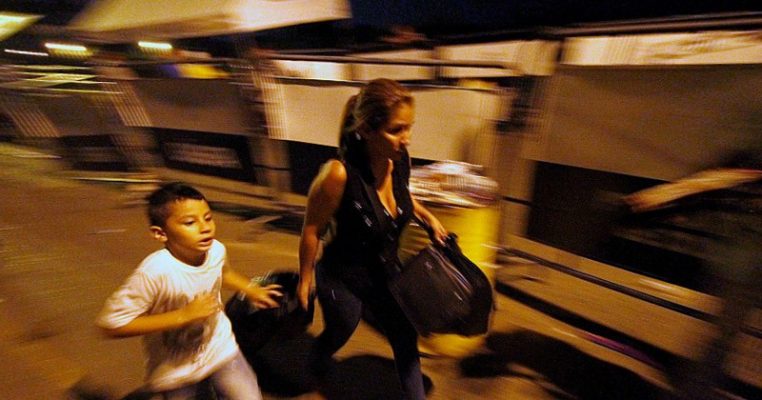
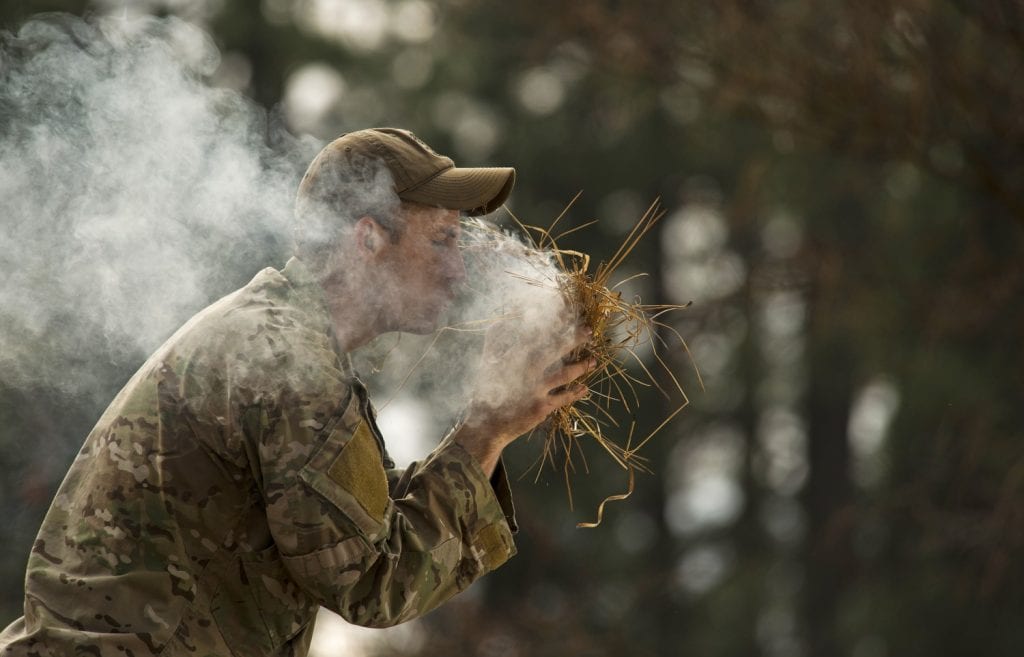

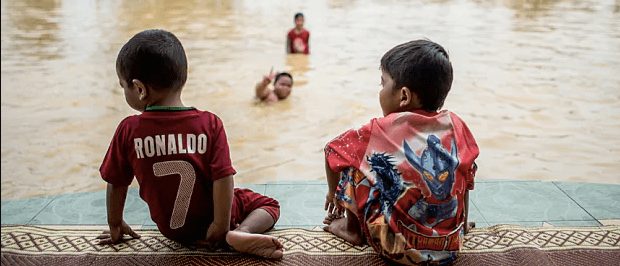
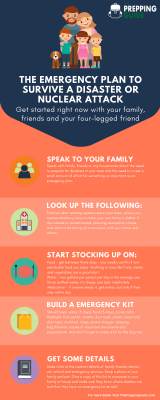
Thanks for this, I live on my own with my daughter and dog and have regular floodings and severe storms in my area. I am lucky over some others though as here in Australia we have very good warning systems so it’s easy for me to get my girl, my dog and our supplies and leave for a week or so.
I couldn’t imagine how stressful it would be if there was a short amount of warning.
I really enjoyed reading this article. It is a breath of fresh air to see people actually writing about real preparedness and not just gloom and doom.
The situations you outlined are quite real and they happen to people all the time. It is not u reasonable to be prepared and it is certainly reasonable to believe that the government cannot take care of everyone. I mean look at Puerto Rico, Hurricane Katrina and those are just hurricanes. Even in a booming economy unemployment still happens and we still have financial corrections. Overall great artcile!